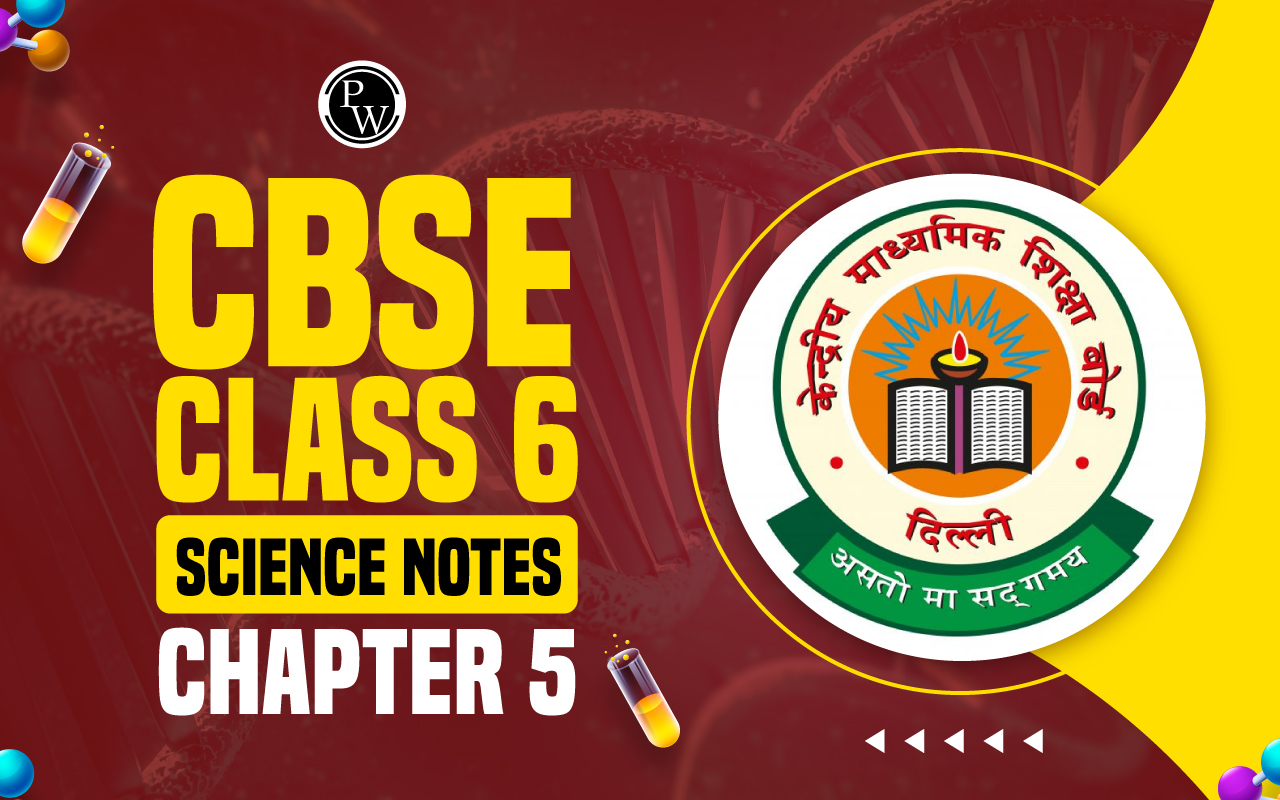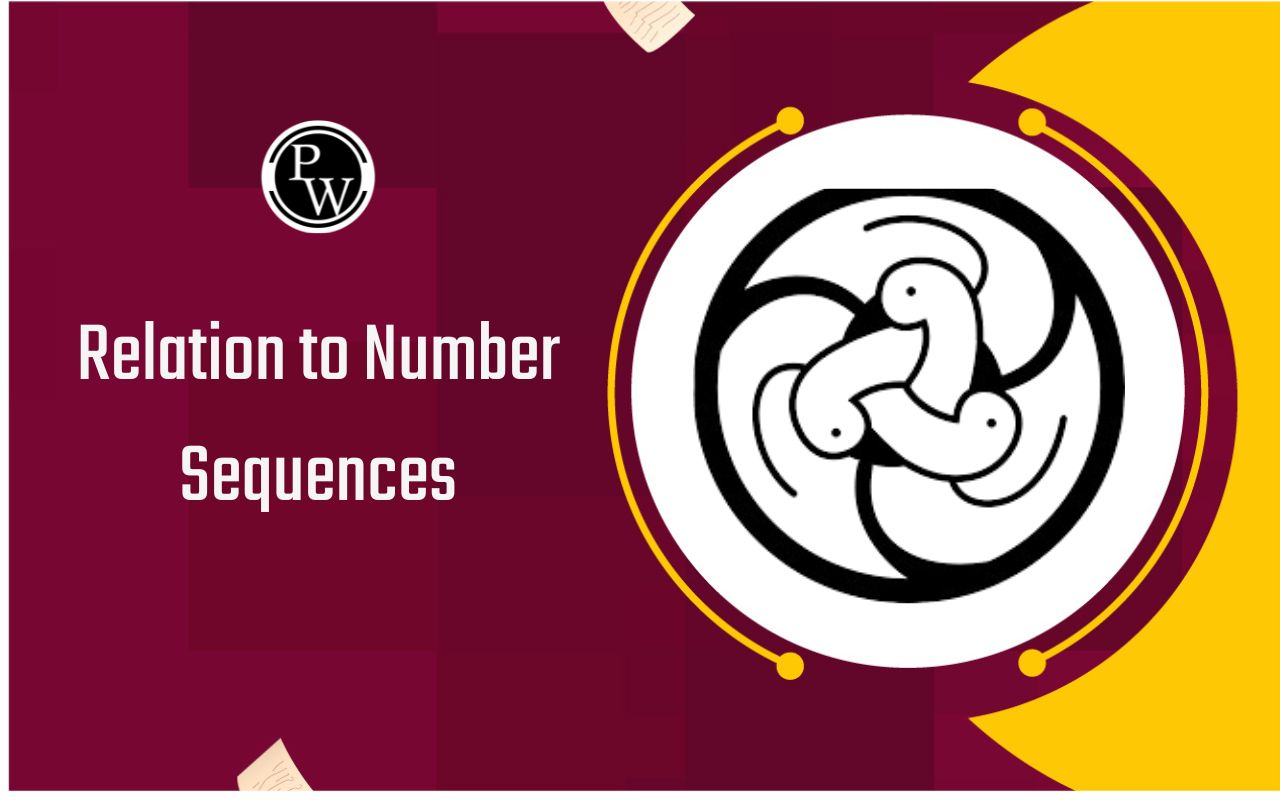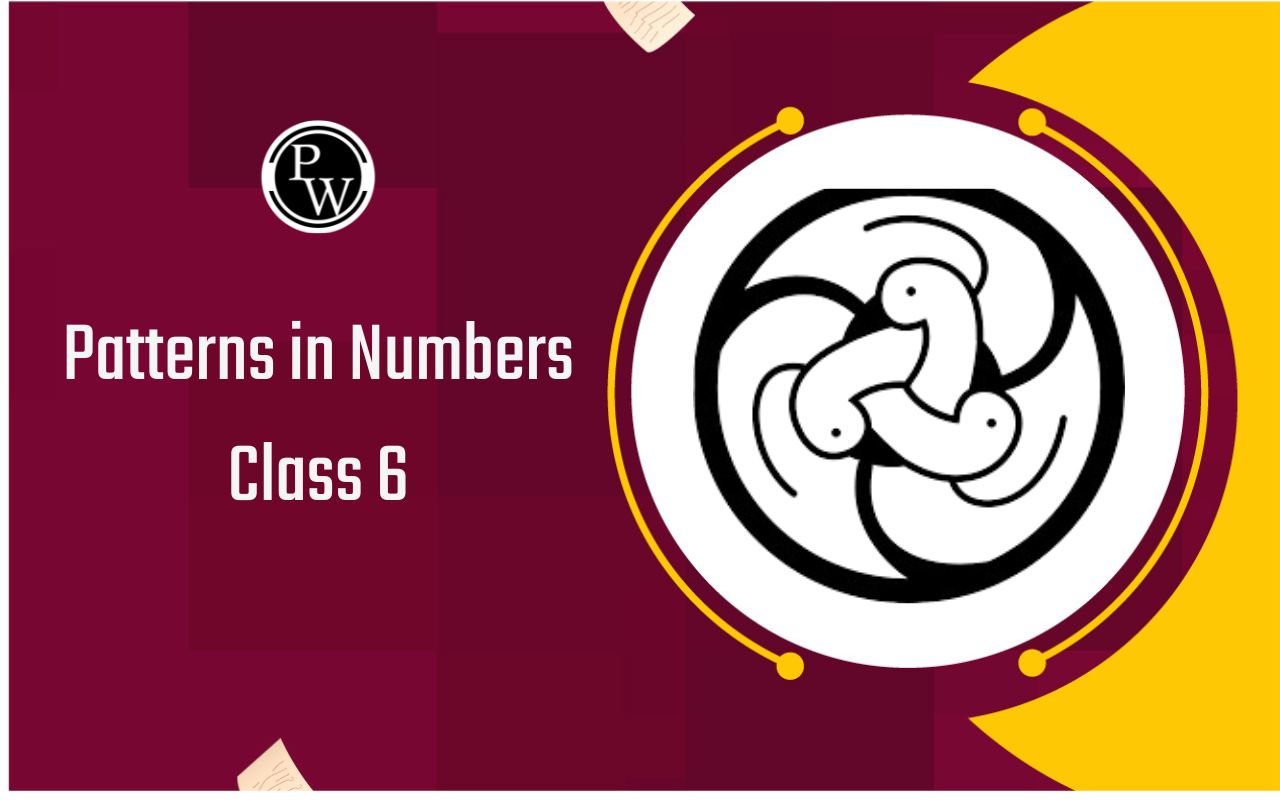

CBSE Class 6 Science Notes Chapter 5
CBSE Class 6 Science Notes Chapter 5: Are you struggling to understand the concepts of Separation of Substances in your CBSE Class 6 Science class? Do you find it hard to remember all the different methods of separating mixtures? Look no further! In this comprehensive blog post, we have compiled detailed notes on Chapter 5 - Separation of Substances from NCERT textbook for CBSE Class 6 students. It includes important topics and questions that will help you ace your exams.CBSE Class 6 Science Notes Chapter 5 Overview
Physics Wallah is pleased to announce the availability of CBSE Class 6 Science Notes Chapter 5 on Separation of Substances in PDF format for convenient access and thorough exam preparation. These meticulously crafted notes are curated by experienced subject experts to provide comprehensive coverage of the chapter. With our Separation of Substances Class 6 Notes, students will find detailed explanations of each concept along with helpful shortcuts and techniques to aid understanding.CBSE Class 10 Science Sample Paper 2023-24
CBSE Class 6 Science Notes Chapter 5 Separation of Substances Notes
Separation of substances is a fundamental concept in science that involves isolating different components of a mixture based on their physical properties. This process is essential for various fields, including chemistry, biology, and environmental science. In this chapter, students will learn about different methods of separation and their applications in everyday life. In this chapter, students learn about the process of separating different substances present in a mixture based on their physical properties. Understanding the methods of separation is crucial as it helps in obtaining pure substances from complex mixtures.Methods of Separation:
1) Handpicking:- This method involves manually picking out substances from a mixture based on their physical properties such as size, shape, or color.
- Handpicking is suitable for separating large particles of substances that are visibly different from each other.
- Winnowing is a process used to separate heavier particles from lighter ones by allowing the wind to blow away the lighter particles.
- It is commonly used in agriculture to separate grains from husk and chaff.
- Sieving involves passing a mixture through a sieve or mesh to separate particles of different sizes.
- It is useful for separating solids of different particle sizes, such as separating flour from bran.
- Evaporation is used to separate a soluble solid from a liquid by heating the mixture and allowing the liquid to evaporate, leaving behind the solid residue.
- This method is commonly used to obtain salt from seawater.
- Filtration involves passing a mixture through a filter paper or porous material to separate insoluble solids from liquids.
- It is used in industries for separating suspended particles from liquids and in laboratories for purifying substances.
- Decantation is used to separate a mixture of insoluble solid and liquid by pouring off the liquid layer carefully, leaving the solid behind.
- It is commonly used to separate sand from water or to separate oil from water.
- Sublimation is the process of direct conversion of a solid into a gas without passing through the liquid state.
- It is used to separate volatile solids from non-volatile ones, such as separating iodine from a mixture of iodine and sand.
- Magnetic separation utilizes magnets to separate magnetic substances from non-magnetic ones.
- It is used in industries for separating magnetic materials such as iron from non-magnetic materials.
- The methods of separation discussed in this chapter find application in various industries such as agriculture, food processing, mining, and environmental science.
- For example, winnowing is used by farmers to separate grains from husk and dust, while filtration is employed in purifying water for drinking purposes.
- Centrifugation is a technique used to separate particles from a liquid medium by spinning the mixture at high speeds.
- It is commonly employed in laboratories and industries to separate suspended particles from liquids or to separate components of a mixture based on their density.
- Chromatography is a method used to separate and analyze complex mixtures by passing them through a stationary phase.
- Different components of the mixture move at different rates through the stationary phase, allowing for their separation based on their interactions with the stationary phase.
- Crystallization is a process used to separate a dissolved solid from a liquid by allowing the liquid to evaporate slowly under controlled conditions.
- As the solvent evaporates, the solute forms crystals, which can be separated from the remaining liquid.
- Distillation is a technique used to separate components of a liquid mixture based on differences in their boiling points.
- The mixture is heated to its boiling point, and the vapors are condensed and collected to obtain the pure components.
- Fractional distillation is a type of distillation used to separate a mixture of liquids with similar boiling points.
- It involves multiple distillation steps, each fractionating the mixture further based on the differences in boiling points of the components.
- These advanced methods of separation find extensive applications in various industries such as pharmaceuticals, petrochemicals, and biotechnology.
- For example, chromatography is widely used in drug development and quality control processes, while distillation and fractional distillation are essential processes in the production of fuels and chemicals.
Related Links -
CBSE Class 6 Science Notes Chapter 5 Important Topics
1. Introduction to Separation of Substances:- Definition: Separation of substances refers to the process of isolating different components or constituents of a mixture by employing various methods.
- Importance: Separation of substances is crucial in numerous fields such as chemistry, agriculture, food processing, and environmental science. It allows us to obtain pure substances for further use and ensures the removal of impurities.
- Physical Methods: These methods involve separating substances without changing their chemical composition. Examples include handpicking, winnowing, sieving, filtration, and magnetic separation.
- Chemical Methods: Chemical methods involve changing the chemical composition of substances to separate them. These methods are more complex and are often used in laboratory settings.
- Explanation: Handpicking is the simplest method of separation where visible impurities are removed manually by hand.
- Examples: Removing stones or pebbles from grains, separating shells from pulses.
- Limitations: Handpicking is limited to separating substances that are visibly distinct and cannot be used for fine particles or mixtures with microscopic impurities.
- Explanation: Winnowing is a method used to separate heavier particles from lighter particles by allowing wind or air to blow away the lighter particles.
- Procedure: The mixture is poured from a height, and the heavier particles fall straight down while the lighter particles are carried away by the wind.
- Application: Winnowing is commonly used in agriculture to separate husk from grains.
- Concept: Sieving involves passing a mixture through a sieve or mesh with uniform-sized holes to separate particles based on their size.
- Purpose: It is used to separate solids of different sizes, such as separating flour from bran or separating stones from sand.
- Examples: Sieving is used in construction, agriculture, and food processing industries.
- Explanation: Magnetic separation involves separating magnetic substances from non-magnetic substances using magnets.
- Principle: Magnetic substances are attracted to magnets and can be separated easily from non-magnetic substances.
- Applications: Magnetic separation is used in industries to separate iron filings from other substances and in recycling processes.
- Definition: Filtration is a method used to separate insoluble solid particles from a liquid by passing the mixture through a filter medium.
- Procedure: The mixture is poured onto the filter paper, and the liquid (filtrate) passes through while the solid particles (residue) are retained on the filter.
- Applications: Filtration is used in laboratories, wastewater treatment plants, and beverage production industries.
- Process: Evaporation involves the conversion of a liquid into its vapor state by heating or exposure to sunlight.
- Purpose: It is used to separate a soluble solid from a liquid by evaporating the solvent and leaving behind the solid residue.
- Examples: Separating salt from seawater, recovering dissolved sugar from sugarcane juice.
- Definition: Condensation is the process of converting a vapor or gas into a liquid state by cooling.
- Application: Condensation is used in distillation processes to separate volatile liquids from non-volatile substances by cooling and collecting the condensed vapor.
- Examples: Distillation of alcohol, separation of essential oils from plant extracts.
| CBSE Syllabus Class 6 | |
| CBSE Class 6 Science Syllabus | CBSE Class 6 Maths Syllabus |
| CBSE Class 6 Social Science Syllabus | CBSE Class 6 English Syllabus |
CBSE Class 6 Science Notes Chapter 5 Important Questions
1) What is the process of separation of substances? The process of separation of substances involves the removal of impurities or unwanted components from a mixture to obtain pure substances. 2) Explain the difference between physical and chemical methods of separation. Physical methods of separation involve the use of physical properties like size, shape, density, and solubility to separate substances without changing their chemical composition. Chemical methods, on the other hand, involve chemical reactions to separate substances based on their chemical properties. 3) Describe the process of handpicking and provide examples. Handpicking is a simple method of separation where substances are separated manually based on their physical properties. For example, picking out stones from rice or pebbles from sand. 4) How does winnowing help in the separation of substances? Give an example. Winnowing is a method of separation where substances are separated by the blowing of air. For example, separating grains from husk by tossing them in the air. 5) What is the principle behind sieving? Provide examples of its application. Sieving is based on the principle of using a sieve or mesh to separate particles of different sizes. It is commonly used in the kitchen to separate flour from bran or sand from gravel. 6) Explain magnetic separation. What types of substances can be separated using this method? Magnetic separation is a method used to separate magnetic substances from non-magnetic substances using magnets. Iron nails can be separated from a mixture of iron nails and sand using this method. 7) Describe the process of filtration. Where is filtration commonly used? Filtration is a method of separation used to separate insoluble solids from liquids or gases using a filter. It is commonly used in water purification plants to remove impurities from water. 8) How is evaporation used to separate substances? Provide examples. Evaporation is used to separate a soluble solid from a liquid by heating the mixture and evaporating the liquid, leaving behind the solid. For example, separating salt from saltwater by boiling the water and collecting the salt crystals. 9) What is condensation, and how is it used in separation techniques? Condensation is the process of converting a gas into a liquid by cooling. It is used in separation techniques like distillation to separate substances based on their boiling points. 10) Explain the process of sublimation and provide examples. Sublimation is the process of converting a solid directly into a gas without passing through the liquid state. It is used to separate substances like ammonium chloride from a mixture of ammonium chloride and sand. 11) Discuss the importance of understanding separation techniques in various industries. Understanding separation techniques is important in various industries such as food processing, pharmaceuticals, and waste management, where the purity of substances is crucial for quality and safety. 12) Compare and contrast different methods of separation based on their advantages and limitations. Different methods of separation have their advantages and limitations. For example, handpicking is simple but not suitable for large-scale separation, while distillation is effective for separating liquids but may not work for substances with close boiling points. 13) How can practical exercises and experiments help in understanding the concepts of separation of substances? Practical exercises and experiments help in understanding separation techniques by providing hands-on experience and visual representation of the processes involved. 14) Discuss the criteria for selecting an appropriate separation method for a given mixture. The criteria for selecting an appropriate separation method include the nature of the mixture, the physical and chemical properties of the substances, and the desired purity of the final products. 15) Can you think of any other innovative methods for separating substances? Explain. Innovative methods for separating substances could include technologies like chromatography for separating complex mixtures or advanced filtration techniques for removing microorganisms from water. These methods require specialized equipment and expertise but offer precise and efficient separation.CBSE Board Exam Centre List 2024
CBSE Class 6 Science Notes Chapter 5 PDF
Chapter 5 of CBSE Class 6 Science covers various topics related to light, shadows and reflections. It is an important chapter that lays the foundation for understanding more complex concepts in physics. In this blog post, we have discussed the main points of the chapter and provided a condensed version of the notes in PDF format. However, it is always helpful to have additional resources to aid in your understanding of a subject. For this reason, we highly recommend checking out Physics Wallah's notes and solutions for CBSE Class 6 Science. They are comprehensive and cover all the essential topics in a clear and concise manner.CBSE Class 6 Science Notes Chapter 5 PDF Download
Moreover, Physics Wallah provides free video lectures by experienced teachers that can supplement your learning. These videos are engaging and informative, making it easier for students to grasp difficult concepts. Additionally, they also offer revision packages and practice questions to help you prepare for exams.CBSE Class 6 Science Notes Chapter 5 FAQs
What is meant by the separation of substances?
The separation of substances refers to the process of isolating or removing different components of a mixture to obtain pure substances. This is done based on the differences in physical or chemical properties of the substances.
What are the different methods of separation of substances?
There are several methods of separation, including handpicking, winnowing, sieving, filtration, evaporation, condensation, magnetic separation, and sublimation.
Can you explain the method of handpicking?
Handpicking is a simple method where substances are separated manually based on their physical properties such as size, shape, or color. For example, picking out stones from grains or separating pebbles from sand.
What is winnowing and how is it done?
Winnowing is a method of separation where substances are separated by blowing air through them. For example, separating grains from husk by tossing them in the air. The lighter husk is carried away by the wind, leaving behind the heavier grains.
How does sieving work?
Sieving involves passing a mixture through a sieve or mesh to separate particles of different sizes. The smaller particles pass through the holes while the larger ones are retained. This method is commonly used to separate flour from bran or stones from sand.
Talk to a counsellorHave doubts? Our support team will be happy to assist you!

Free Learning Resources
PW Books
Notes (Class 10-12)
PW Study Materials
Notes (Class 6-9)
Ncert Solutions
Govt Exams
Class 6th to 12th Online Courses
Govt Job Exams Courses
UPSC Coaching
Defence Exam Coaching
Gate Exam Coaching
Other Exams
Know about Physics Wallah
Physics Wallah is an Indian edtech platform that provides accessible & comprehensive learning experiences to students from Class 6th to postgraduate level. We also provide extensive NCERT solutions, sample paper, NEET, JEE Mains, BITSAT previous year papers & more such resources to students. Physics Wallah also caters to over 3.5 million registered students and over 78 lakh+ Youtube subscribers with 4.8 rating on its app.
We Stand Out because
We provide students with intensive courses with India’s qualified & experienced faculties & mentors. PW strives to make the learning experience comprehensive and accessible for students of all sections of society. We believe in empowering every single student who couldn't dream of a good career in engineering and medical field earlier.
Our Key Focus Areas
Physics Wallah's main focus is to make the learning experience as economical as possible for all students. With our affordable courses like Lakshya, Udaan and Arjuna and many others, we have been able to provide a platform for lakhs of aspirants. From providing Chemistry, Maths, Physics formula to giving e-books of eminent authors like RD Sharma, RS Aggarwal and Lakhmir Singh, PW focuses on every single student's need for preparation.
What Makes Us Different
Physics Wallah strives to develop a comprehensive pedagogical structure for students, where they get a state-of-the-art learning experience with study material and resources. Apart from catering students preparing for JEE Mains and NEET, PW also provides study material for each state board like Uttar Pradesh, Bihar, and others
Copyright © 2025 Physicswallah Limited All rights reserved.
Get App









